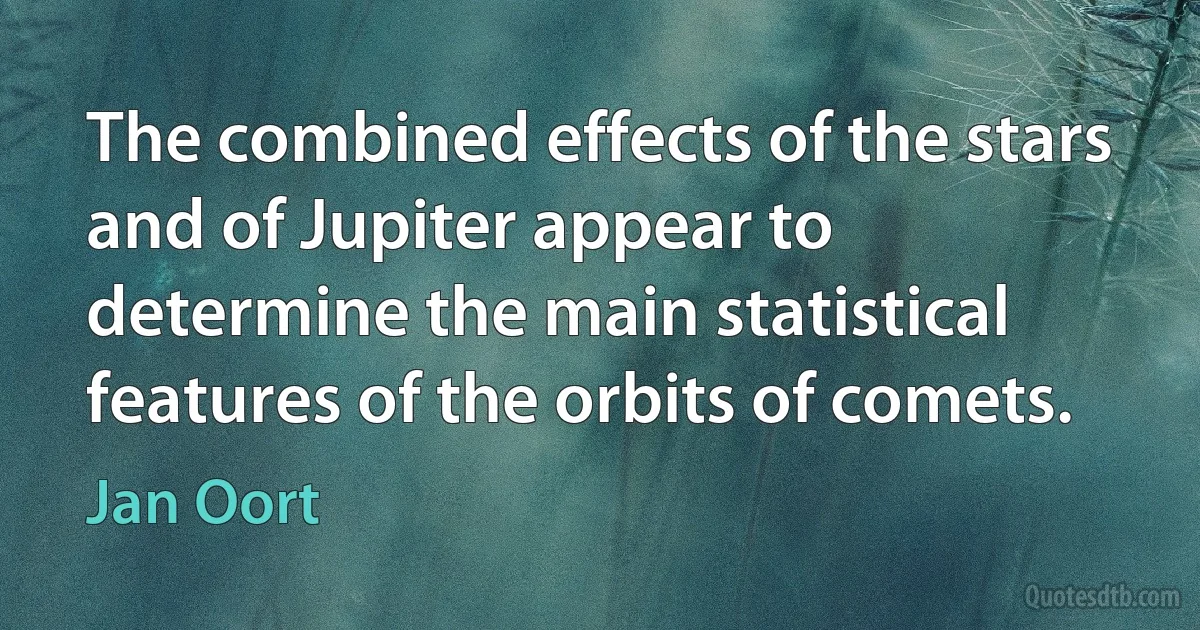Jan Oort quotes
The distribution of galaxies is clumpy on all scales, ranging from binaries, triples, and multiples, through groups containing a few and a hundred galaxies, to rich clusters with thousands of members, masses up to 1015±1M☉, and diameters of the order of 10 Mpc. The latter have been discussed by Neta A. Bahcall in a preceding volume of this series. The clusters are at the end of the scale of the more or less regular structures in the Universe.

Jan Oort
From a score of well-observed original orbits it is shown that the "new" long-period comets generally come from regions between about 50000 and 150000 A. U. distance. The sun must be surrounded by a general cloud of comets with a radius of this order, containing about 1011 comets of observable size; the total mass of the cloud is estimated to be of the order of 1/10 to 1/100 of that of the earth. Through the action of the stars fresh comets are continually being carried from this cloud into the vicinity of the sun.

Jan Oort
The article indicates how three facts concerning the long-period comets, which hitherto were not well understood, namely the random distribution of orbital planes and of perihelions, and the preponderance of nearly-parabolic orbits, may be considered as necessary consequences of the perturbations acting on the comets.

Jan Oort
There exists also another type of galaxy agglomeration. These have diameters between roughly one and ten times those of large clusters, but have much smaller densitities; they are usually irregular, with patchy density variations and no central concentration. The larger and most conspicuous of these agglomerations may contain several clusters, which explains why they have been given the name "superclusters." In their longer dimensions, crossing times exceed the age of the Universe. They are thus unrelaxed. Unrelaxed apperance, together with large size, might be taken as a definition of superclusters.

Jan Oort

